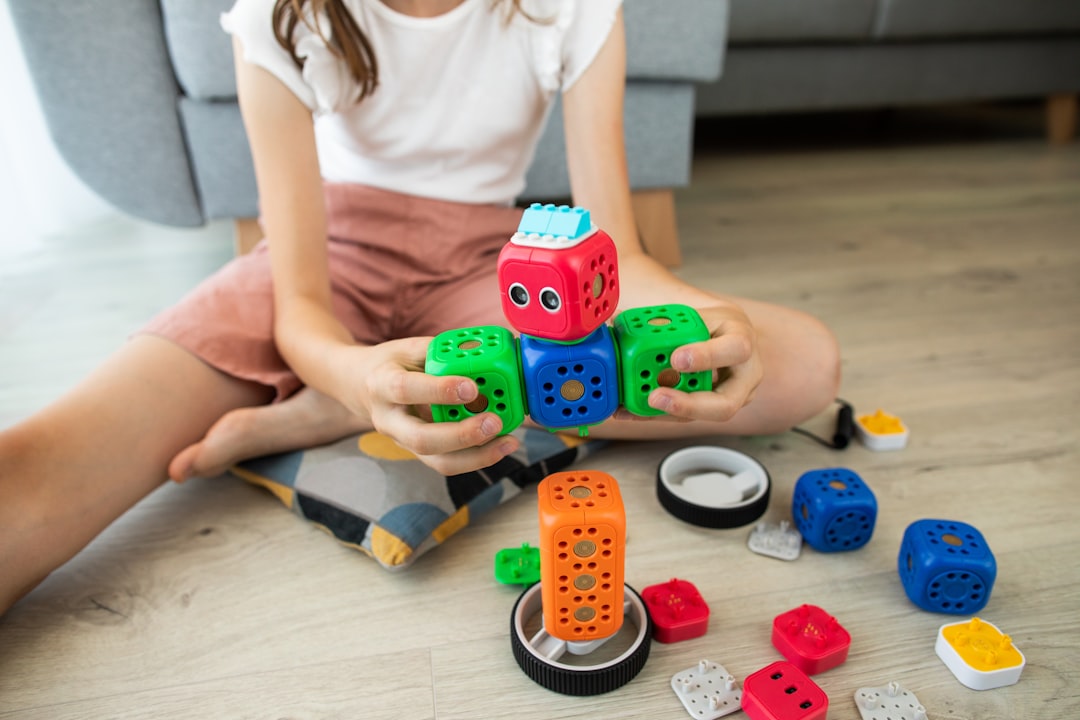In recent years, robotics has become an increasingly prominent part of our daily lives. From self-driving cars to robotic vacuum cleaners, the presence of robots is becoming more and more common. But the potential of robotics goes far beyond these everyday applications. Robotics has the power to shape the future in ways we can only begin to imagine.
The field of robotics is constantly evolving and advancing, with new technologies and innovations being developed every day. This rapid progress opens up a world of possibilities for the future. From healthcare to sustainability, robotics has the potential to revolutionize industries and solve some of the world’s most pressing challenges.
Robotics and STEM Education: Building a Strong Foundation
One of the most exciting aspects of robotics is its ability to serve as a tool for teaching STEM subjects (science, technology, engineering, and mathematics). By engaging students in hands-on learning experiences, robotics can help build a strong foundation in these critical areas.
When students work with robots, they are not only learning about technology and engineering principles, but they are also developing important problem-solving and critical thinking skills. They are encouraged to think creatively and find innovative solutions to challenges. This type of hands-on learning is highly effective in helping students grasp complex concepts and develop a deep understanding of STEM subjects.
Furthermore, robotics can help bridge the gap between theory and practice. Students can apply what they have learned in the classroom to real-world scenarios, giving them a sense of purpose and relevance. This practical application of knowledge helps students see the value in their education and motivates them to pursue further studies in STEM fields.
The Benefits of Robotics for Teenagers: Skills Development and Career Opportunities
Teenagers who engage with robotics not only gain valuable technical skills but also develop a range of transferable skills that are highly sought after in today’s job market. Problem-solving, critical thinking, teamwork, and communication are just a few examples of the skills that teenagers can develop through robotics.
In addition to these skills, robotics also opens up a world of career opportunities for teenagers. The field of robotics is rapidly growing, and there is a high demand for skilled professionals. From robotics engineers to software developers, there are a wide variety of career paths available in this field. By engaging with robotics at a young age, teenagers can gain a head start in their career journey and position themselves for success in the future.
Robotics and Creativity: Encouraging Innovation and Imagination
| Metrics | Data |
|---|---|
| Number of robotics programs in schools | 1,500 |
| Percentage of students interested in robotics | 75% |
| Number of patents related to robotics | 10,000 |
| Percentage of companies using robotics in their operations | 50% |
| Number of jobs created by the robotics industry | 2.3 million |
| Percentage of adults who believe robotics will have a positive impact on society | 65% |
While robotics is often associated with technology and engineering, it also has the potential to foster creativity and innovation. By combining art and design with robotics, new possibilities emerge.
For example, robotics can be used to create interactive art installations or kinetic sculptures. These works of art not only engage viewers but also challenge traditional notions of what art can be. By incorporating robotics into the creative process, artists can push boundaries and explore new forms of expression.
Furthermore, robotics can be used as a tool for design thinking. Designers can use robots to prototype and test their ideas, allowing for rapid iteration and refinement. This iterative process encourages designers to think outside the box and come up with innovative solutions to problems.
Robotics and Social Skills: Fostering Communication and Collaboration
In addition to technical skills, robotics can also help teenagers develop important social skills such as communication and collaboration. When working on robotics projects, students often have to work in teams, requiring them to effectively communicate their ideas and collaborate with others.
By working together towards a common goal, students learn how to listen to others’ perspectives, compromise, and resolve conflicts. These skills are not only valuable in the context of robotics but also in all aspects of life. In today’s interconnected world, the ability to work well with others is highly valued by employers.
Furthermore, the collaborative nature of robotics projects helps students develop empathy and understanding for others. They learn to appreciate the strengths and contributions of their teammates, fostering a sense of community and cooperation.
Robotics and Self-Esteem: Boosting Confidence and Resilience

Engaging with robotics can have a positive impact on teenagers’ self-esteem and resilience. When students work on robotics projects, they often face challenges and setbacks. However, by persevering and finding solutions to these challenges, they develop a sense of accomplishment and confidence in their abilities.
Furthermore, robotics provides a safe space for teenagers to take risks and make mistakes. In the process of building and programming robots, students are encouraged to experiment and try new things. This trial-and-error approach helps them develop resilience and learn from their failures.
By overcoming challenges and setbacks, teenagers gain a sense of resilience that will serve them well in all aspects of life. They learn that failure is not something to be feared but rather an opportunity for growth and learning.
Robotics and Global Citizenship: Addressing Societal and Environmental Challenges
https://www.youtube.com/embed/mm8YD99OHuA
One of the most exciting aspects of robotics is its potential to address societal and environmental challenges. From healthcare to sustainability, robotics has the power to make a positive impact on the world.
In the field of healthcare, robotics can be used to assist with surgeries, provide care for the elderly, or deliver medication in remote areas. These applications not only improve the quality of care but also increase access to healthcare services.
In terms of sustainability, robotics can be used to automate processes and reduce waste. For example, robots can be used in manufacturing plants to optimize energy consumption or in agriculture to improve crop yields while minimizing the use of pesticides.
By harnessing the power of robotics, we can create a more sustainable and equitable future for all.
Robotics and Entrepreneurship: Inspiring Young Entrepreneurs to Make a Difference
Robotics has the potential to inspire young entrepreneurs to make a difference in the world. By combining their technical skills with their creativity and innovation, teenagers can create innovative solutions to societal and environmental challenges.
For example, a teenager with a passion for sustainability and robotics could develop a robot that cleans up plastic waste from the ocean. By starting their own robotics company, they can bring their idea to life and make a positive impact on the environment.
Furthermore, robotics provides young entrepreneurs with a platform to showcase their ideas and innovations. With the rise of maker spaces and robotics competitions, teenagers have the opportunity to connect with like-minded individuals and gain exposure for their projects.
By empowering young entrepreneurs, robotics has the potential to drive innovation and create positive change in the world.
Robotics and Diversity: Promoting Inclusion and Equity in Technology
Promoting diversity and inclusion in the field of robotics is crucial for creating equitable and accessible technology. By ensuring that people from all backgrounds have the opportunity to engage with robotics, we can harness the full potential of this technology.
One way to promote diversity in robotics is by providing equal access to resources and opportunities. This includes making robotics education accessible to all students, regardless of their socioeconomic background or gender. By breaking down barriers and providing equal opportunities, we can create a more inclusive and diverse field.
Furthermore, it is important to promote diversity in the design and development of robots. By involving people from diverse backgrounds in the design process, we can ensure that robots are designed with inclusivity in mind. This includes considering factors such as gender, race, and disability when designing robots.
By promoting diversity and inclusion in robotics, we can create technology that reflects the needs and experiences of all individuals.
Empowering the Next Generation with Robotics
In conclusion, robotics has the potential to empower the next generation in countless ways. From building a strong foundation in STEM education to fostering creativity and innovation, robotics opens up a world of possibilities for teenagers.
By engaging with robotics, teenagers can develop a range of valuable skills, including problem-solving, critical thinking, communication, and collaboration. These skills are highly sought after in today’s job market and will serve teenagers well in their future careers.
Furthermore, robotics has the potential to address societal and environmental challenges, promote diversity and inclusion, and inspire young entrepreneurs to make a difference. By harnessing the power of robotics, we can create a more sustainable, equitable, and innovative future for all.
I encourage readers to explore the possibilities of robotics in their own lives and communities. Whether it’s through participating in robotics competitions, starting a robotics club at school, or pursuing a career in robotics, there are countless ways to engage with this exciting field. The future is bright with robotics, and it’s up to us to shape it.
If you’re a teenager interested in robotics, you’ll definitely want to check out this article on robotics engineer education. It provides valuable insights into the educational path and skills required to become a robotics engineer. Whether you’re considering a career in robotics or simply want to expand your knowledge, this article is a great resource. You can find it here. Additionally, if you’re curious about the top robotics companies that are hiring, this article provides an overview of some of the leading players in the industry. It’s a great way to stay updated on the latest opportunities and trends in the field. You can read it here. Lastly, if you’re interested in seeing examples of robots in everyday life, this article showcases various robots that are already integrated into our daily routines. From household chores to healthcare, these examples demonstrate the wide range of applications for robotics. Check it out here.
FAQs
What is robotics?
Robotics is a branch of engineering and technology that deals with the design, construction, operation, and use of robots.
What are robots?
Robots are machines that are designed to perform tasks that are usually done by humans. They can be programmed to perform a variety of tasks, from simple to complex.
What are the benefits of learning robotics for teens?
Learning robotics can help teens develop problem-solving skills, critical thinking skills, and creativity. It can also prepare them for future careers in engineering, technology, and other related fields.
What skills are required to learn robotics?
To learn robotics, teens need to have a basic understanding of math, physics, and computer programming. They also need to have good communication skills, teamwork skills, and the ability to think creatively.
What are some examples of robotics projects for teens?
Some examples of robotics projects for teens include building a robot that can navigate a maze, building a robot that can play a game, or building a robot that can perform a specific task, such as sorting objects.
What are some resources for teens who want to learn robotics?
There are many resources available for teens who want to learn robotics, including online tutorials, robotics clubs, and robotics camps. Many schools also offer robotics classes and programs.




Leave a Reply